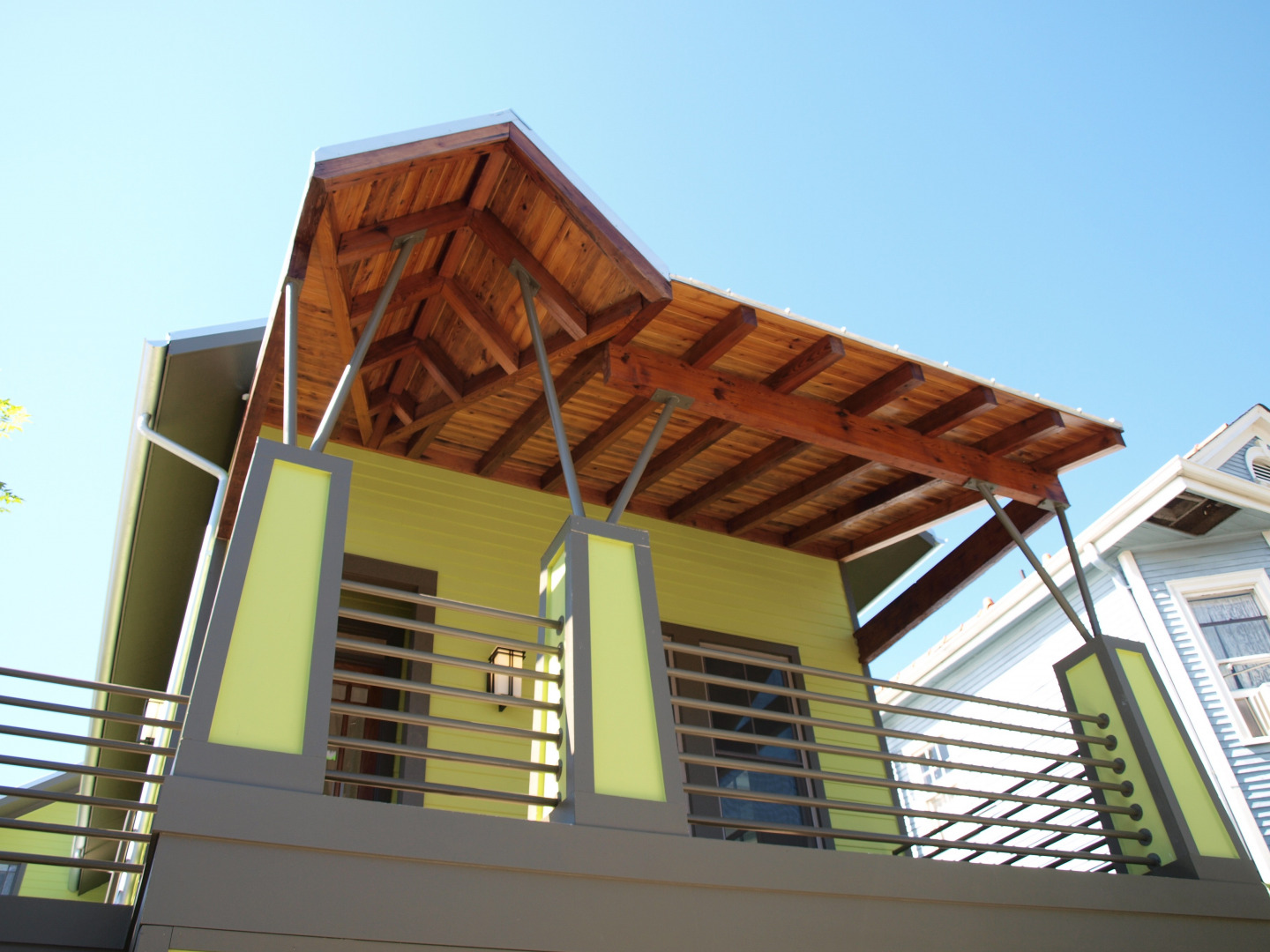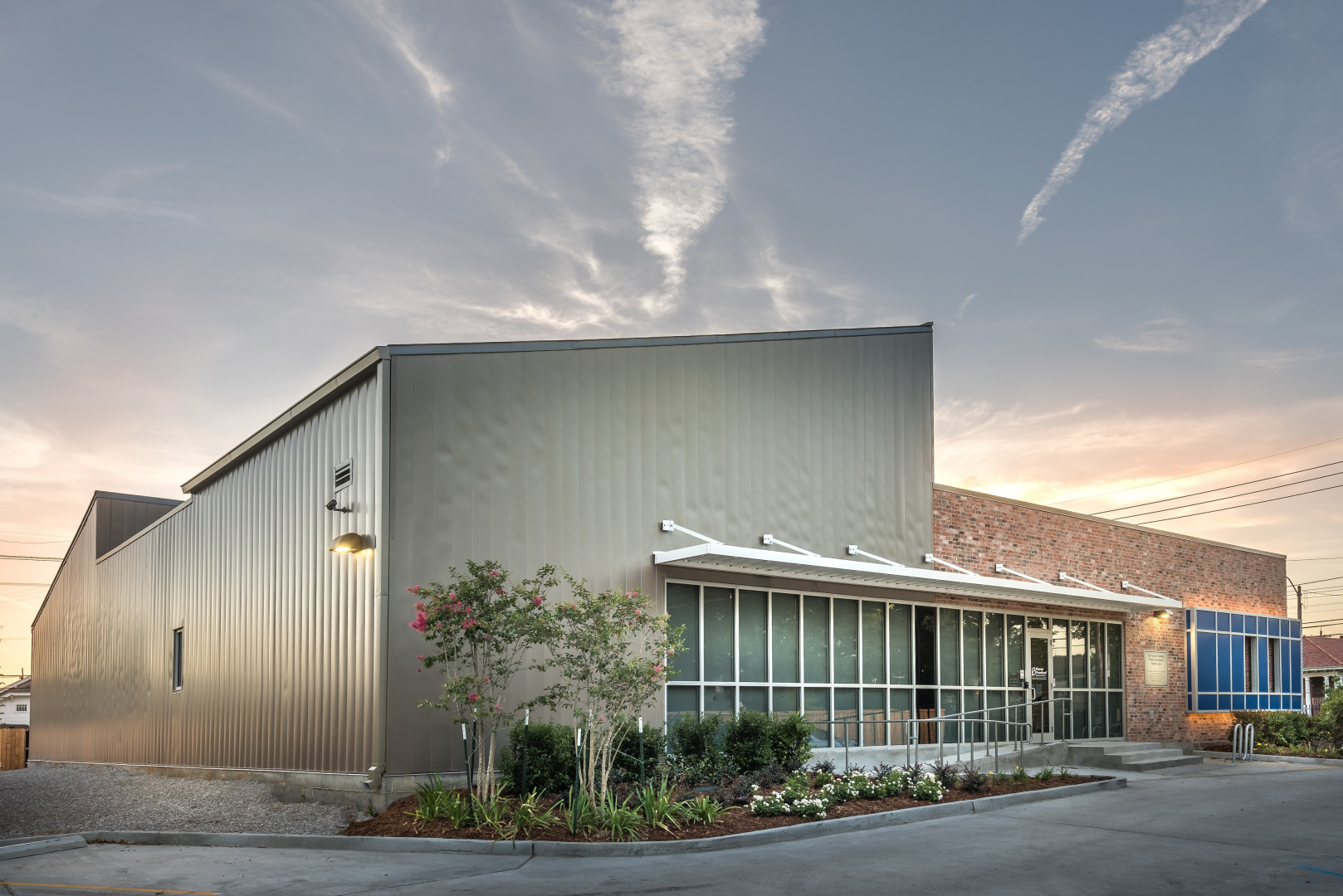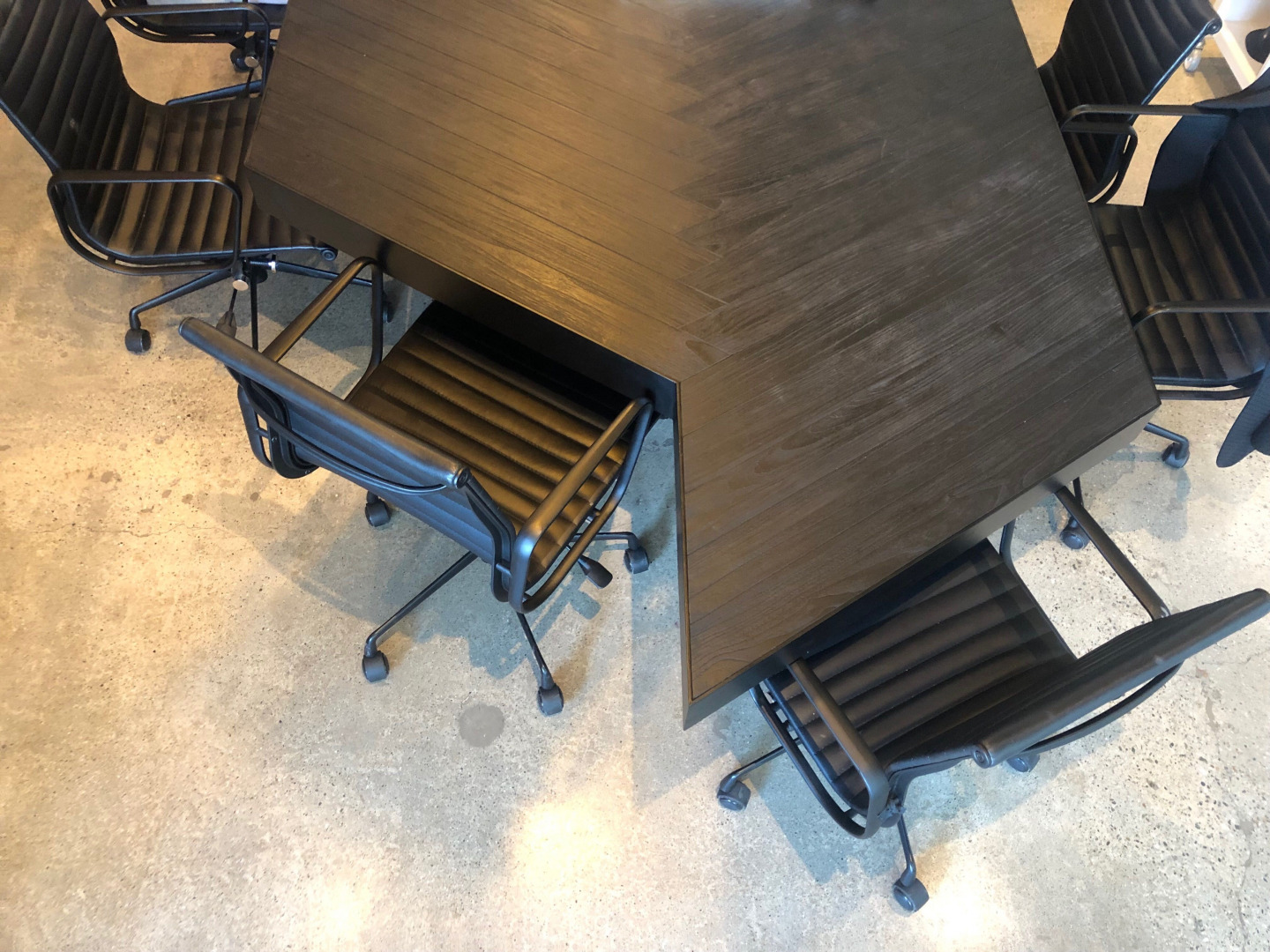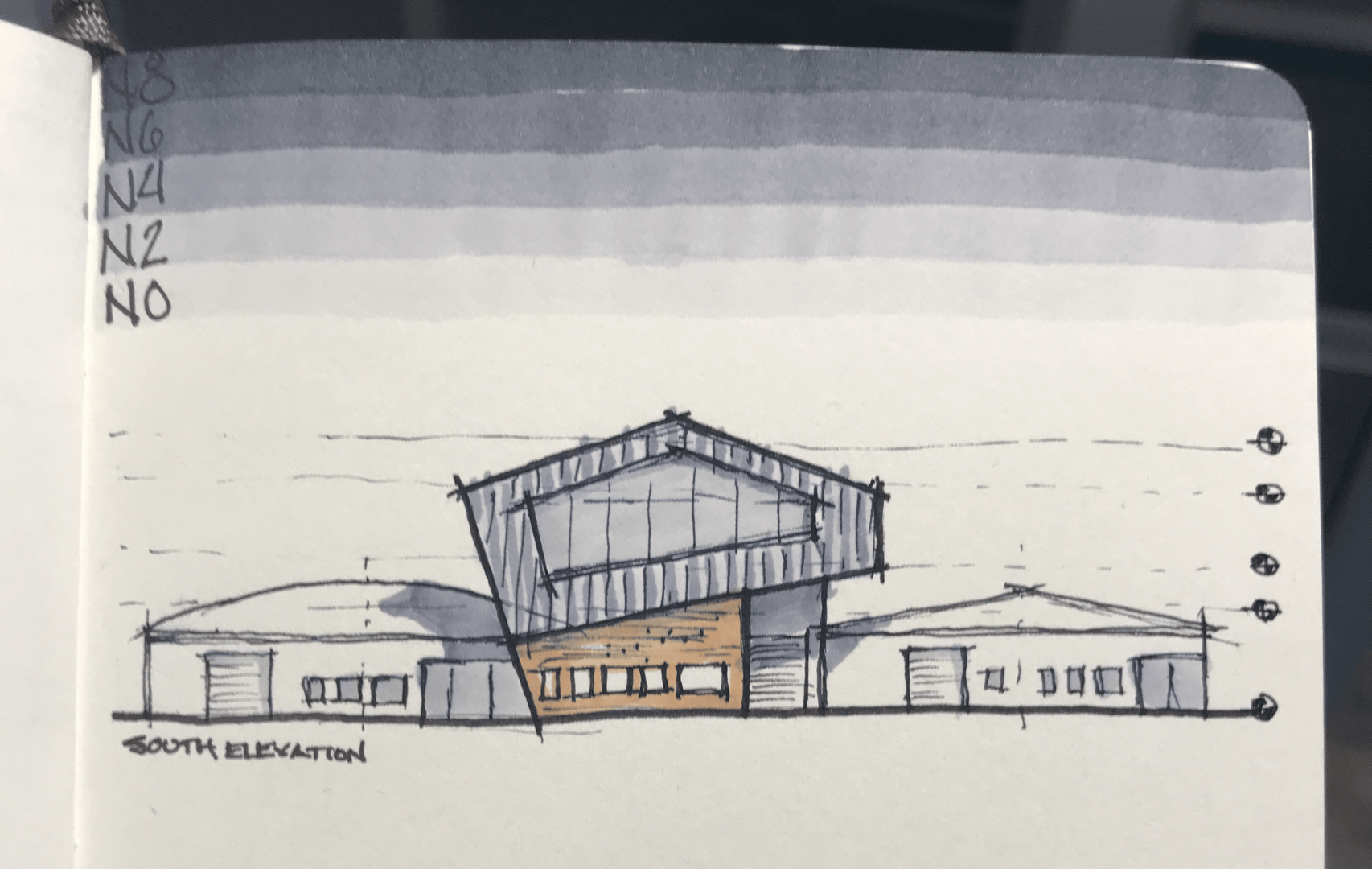Meet Carlos Augusto Garcia | architect, designer, & artist

We had the good fortune of connecting with Carlos Augusto Garcia and we’ve shared our conversation below.
Hi Carlos Augusto, we’d love to hear more about how you thought about starting your own business?
The thought process for Gravity Architects began long before it was formally established in 2019. It grew out of a practical need I identified while working at a more traditional firm in New Orleans. I often had smaller projects in graphic design, web development, or art installations, that required a type of agile decision-making that just wasn’t characteristic of a large, established apparatus. These projects also gave me a welcome opportunity to collaborate with friends and colleagues outside of a formal office setting.
When I moved to Los Angeles, my horizons broadened. Even while at a firm like M-Rad, which was far more open to expanding the definition of the architect’s role, I still found immense value in having a separate outlet to whet my creative appetite. It became a vessel for those quick-turnaround projects and explorations.
The name, “Gravity,” was a conscious choice. It’s meant to allude to the underlying seriousness of what we do as architects and designers, as well as a nod to the fundamental force we are in a constant dialogue with in the built environment. The idea began as an attempt to pivot my existing brand’s logomark into something that didn’t reference only my last name, which I’d been operating under for years. The tagline, “how you do anything is how you do everything,” is a direct reflection of my core philosophy that there are no unimportant details: every single decision, no matter how small or seemingly invisible, has consequences.
Today, especially with my role at an architecture firm like Brooks + Scarpa, Gravity serves as an essential creative outlet. It allows me to continue tackling those smaller-scale projects—objects, furniture, graphics, single-family residences, and early-stage feasibility studies—that keep my hands in a different type of making. It keeps things balanced.


Alright, so let’s move onto what keeps you busy professionally?
My career path was shaped by a combination of passion, practicality, and a series of profound challenges that cemented my professional mission. My approach to social impact is rooted in the belief that design is an act of service, a conviction that was forged during my earliest days in the profession.
It really began in the aftermath of Hurricane Katrina, where my work with Williams Architects involved pro-bono and subsidized single-family and multifamily housing projects focused on rebuilding New Orleans. That foundational experience with disaster recovery has remained a consistent thread in my work.
Here in Los Angeles, I have continued that commitment, both through my work as a board member of the Los Angeles chapter of the American Institute of Architects (AIA), collaborating with the AIA Pasadena & Foothills chapter to develop resources for wildfire response, and by becoming certified by the California Governor’s Office of Emergency Services as a post-disaster Safety Assessment Program Evaluator, ready to assist communities in the wake of an emergency.
My personal practice, Gravity Architects, was established as a direct continuation of that ethos. It has always served as a vehicle for agile, community-focused work that often falls outside the scope of larger firms. Since the early 2000s, I have provided pro-bono and reduced-fee graphic and web design consultations to help small and disadvantaged businesses establish their brand identities. We also engage in architectural pro-bono work, like our “Treehouse” project with the Housing Innovation Collaborative, a non-profit housing-focused R+D platform showcasing and piloting new design, finance, & policy solutions to address the housing affordability crises around the world.
This mission scales up through my work at Brooks + Scarpa. I am proud to be part of a Women-Owned Small Business that has made affordable housing a central pillar of its practice, having designed over 10,000 units, most of which are affordable. My direct contribution to this legacy includes projects like the Rose Apartments in Venice, a 100% affordable and permanent supportive housing project where I served as the Project Architect.
My volunteer work is aimed at creating systemic change. With the National Council of Architectural Registration Boards (NCARB), I have been part of multiple committees focused on developing more equitable, alternative paths to licensure to make the profession more accessible. Within the AIA, my local work as a Director for LA involves direct policy advocacy, while my national work on the Committee on the Environment (COTE) focused on advancing climate action and environmental justice. This policy work extends to the civic realm through my role as a Resource Team expert for the National Endowment for the Arts’ Mayors’ Institute on City Design (MICD), where I advised mayors on using design to address their cities’ most pressing challenges.
Perhaps the most pressing is the global rulebook for our built environment. My involvement with the International Code Council (ICC) and ASHRAE allows me to participate in crafting the international standards for building safety, energy efficiency, and greenhouse gas evaluation that shape how we build around the world. No matter the level of involvement, my goal remains the same: to use design to create a more resilient, equitable, and sustainable world.


Let’s say your best friend was visiting the area and you wanted to show them the best time ever. Where would you take them? Give us a little itinerary – say it was a week long trip, where would you eat, drink, visit, hang out, etc.
Oh, that’s a fun question! For me, showing a friend the best of Los Angeles means showing them the incredible diversity of its architecture, art, food, and landscapes. It would be just about a full a week of exploration. Buckle in.
We would start on the Westside where I live, exploring the unique coastal urbanism of Venice. A walk through the historic Venice Canals is essential to understand that neighborhood’s origins, followed by a visit to the Eames House in Pacific Palisades, which is a masterclass in modern residential design. We’d have lunch at a place like Gjelina on Abbot Kinney, which is as much about the vibrant community scene as it is about the excellent food.
Next, we would dedicate a full day to Downtown LA, experiencing the contrast of its historic core and its modern cultural monuments. We would have to see the sublime light and ironwork inside the Bradbury Building, grab a varied and chaotic lunch at Grand Central Market, and then spend the afternoon with the contemporary masterpieces, walking from Gehry’s Walt Disney Concert Hall to The Broad by Diller Scofidio + Renfro. For the evening, a drink at a rooftop bar like Perch would be perfect to take in the skyline we had just explored from the ground level.
A proper art day would be next, focused on Museum Row. We would spend hours at LACMA, not just for the incredible collection, but to discuss the future of the museum itself with the new Peter Zumthor building. Right next door, the La Brea Tar Pits and Museum offers a surreal and uniquely LA experience, where paleontological history is bubbling up right in the middle of the city.
To really understand the city’s scale, a trip up to the Griffith Observatory is a must. The building itself is a beautiful civic monument, and the views of the entire LA basin are unparalleled. We would follow that with a hike in the surrounding hills, then find a classic spot for dinner in a neighborhood with some character, like Los Feliz or Silver Lake. I’d also want to take them to a concert at the Hollywood Bowl; there is no better venue for live music on a summer evening.
Mid-week, we would take a trip to Pasadena to appreciate a different kind of architectural history: a tour of the Gamble House. Seeing that level of craftsmanship from Greene & Greene is always inspiring. We’d spend the rest of the afternoon exploring Old Town, which has its own distinct urban feel.
Of course, we’d have to do a deep dive into the Arts District back in DTLA. We would visit the galleries like Hauser & Wirth, see the murals, and maybe stop by SCI-Arc to see what the next generation of architects is thinking about. To cap it off, we’d hang out at a local brewery.
For the final day, we would do something quintessentially Californian. Perhaps a drive up the Pacific Coast Highway to Malibu, or a visit to the Getty Center. The Getty is the complete experience: Richard Meier’s architecture, the gardens, the art collection, and the views back across the city. It’s a perfect place for a final day of reflection before a farewell dinner somewhere overlooking the ocean. It would be a busy week, but it would give my friend a real sense of the city I’ve grown to love.


Who else deserves some credit and recognition?
That’s a wonderful question, and it gets to the heart of a fundamental truth: no one achieves anything alone. My story is absolutely built on a foundation of support from countless people, and I’m grateful for the opportunity to recognize a few of them.
First, I have to give a shoutout to my colleagues at Brooks + Scarpa. I was drawn to their firm to address the city’s housing crisis, and working with them has been transformative. With their help and guidance, I truly feel I gained the tools to forge my path as a citizen architect, learning how to better tackle major issues of social justice within the practice of architecture. They are mentors in the truest sense of the word.
I also have to recognize a client who showed incredible trust and resolve under immense pressure: the entire team at Planned Parenthood Federation of America. The New Orleans clinic project tested my perseverance in ways I could not have imagined. The support of our local team, and that of their organization, allowed our team to continue our work without fear and to focus on designing a space for dignity in the face of hostility. That experience was one of the most impactful lessons in my professional life, and it would not have been possible without them and the coalition of smaller, women- and minority-owned businesses who stepped up to work with us.
Of course, my story begins with my parents. I grew up in a household that valued practicality, and while they were initially worried about my desire to pursue a career as an artist, we found a satisfactory compromise in architecture. Their support, and the practical values they instilled in me, set me on this path. We lost my father at the end of 2024, so I’ve made a conscious decision to make him the subject of my next few paintings.
Finally, I want to give credit to the entire community of volunteers I work with across the AIA, NCARB, ICC, and other industry organizations. The work of creating systemic change in our profession is a slow, collaborative effort. It’s carried out by dozens of passionate people who dedicate their time and expertise after their day jobs are done. My success is deeply interwoven with their collective effort, and they all deserve recognition.
Website: https://gravity-architects.com/
Instagram: https://www.instagram.com/gravity.architects/
Linkedin: https://www.linkedin.com/in/carlos-ag/
Facebook: https://www.facebook.com/gravityarx/
Other: https://www.instagram.com/carlito_mas/


Image Credits
Carlos Augusto Garcia, Planned Parenthood Gulf Coast, Brooks + Scarpa, Jeff Durkin
